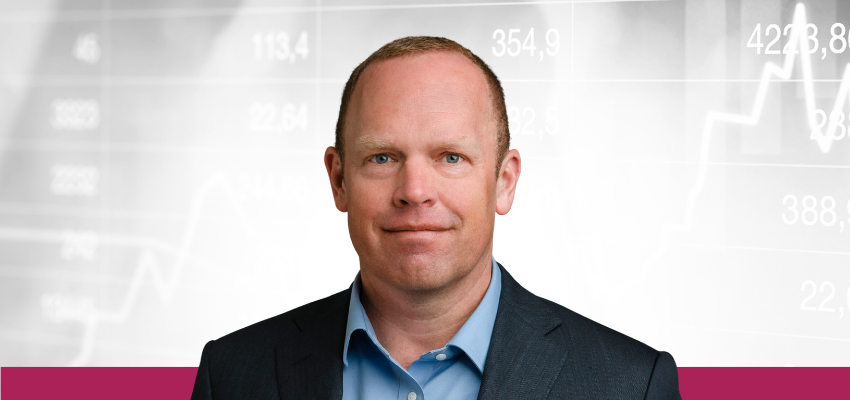Market Update
It can become somewhat unsettling when it seems everything is working. We normally live in a world of mean reversion and while winning streaks can be fun, they often are followed by a rough patch. That has to be what many investors are feeling these days. Since the ‘Liberation Day’ selloff in April, the worst thing to do was hold cash, as most equity indices have rallied by over 35% and are now sitting at or near all-time highs.
This isn’t what most would expect if you were just focusing on the headlines. Tariff and trade disputes remain unsettled and are continuing to cause uncertainty. Geo-politics is a mess with active wars around the world and tensions increasing in Asia. The housing market has ground to a halt and stress around the economy seems to be increasing. Yet markets are shrugging off these concerns and climbing the proverbial ‘wall of worry’.
At long last the US Federal Open Market Committee (FOMC) joined the rate cutting party with their first rate cut since last December. Since President Trump was elected, he has been very vocal in his request to see interest rates lowered. But the conditions typically required for rate cuts haven’t been there and cuts were put on hold until this past month. Signs of weakness in the labour market over the summer, and an admission that we may need to get used to higher inflation, allowed Fed Chair Powell to concede and reduce rates by 25bps, with a signal of more to come. A result cheered on by the market.
Investors have been trained that lower yields are positive for stock prices. And while this rate cut appears much more political than economic, the result was the same, as buyers continued to pour cash into equities.
But how long can this winning streak last? By many measures equity valuations are looking expensive, particularly in the favoured mega cap technology winners. Bullish sentiment is becoming stretched, and investor complacency is high. You could argue many parts of the market are now priced for perfection. That is a dangerous prospect as perfection is seldom long-lasting.
One way to potentially immunize some of this risk is to focus on individual names and to avoid the broader market. It is quickly becoming a stock pickers market. With an increase in M&A and corporate activity we may see a rotation towards the laggards begin to occur, with small caps looking particularly interesting.
Then there is gold. The original safe haven asset is having its best year in decades, gaining nearly 50% YTD. This is not something you would expect to see when risk assets are rallying. Maybe it is telling us that all may not be as good as it seems. The US$ is off by 10% on the year and those saying that it is at risk of losing its reserve status are no longer laughed out of the room. US debt levels remain historically high and we believe the ‘Big Beautiful Bill’ isn’t going to help.
So where does this leave us? For a year in which many were not looking for attractive returns, markets have dramatically exceeded expectations. How long can we keep looking over the valley and ignoring the red flags? That’s the billion-dollar question. The good news is many corporations have been able to grow earnings and we have entered a rate-cutting cycle. But are things getting too easy? After a run like we have recently experienced, the mean reversion could be harsh and come out of nowhere. The fourth quarter is historically the strongest for markets, but in a year in which seasonality hasn’t worked out, will it this time? Or maybe it is time to take some profits and look for better opportunities.
Performance
The Pender Alternative Multi-Strategy Income Fund returned 2.8% for the quarter, bringing the YTD performance to 5.0%1. The Fund’s blended benchmark2 returned 2.8% for the quarter and is -7.6% YTD. Returns for the Fund were largely driven by Pender Corporate Bond Fund. The Fund owns Pender Corporate Bond Fund for its total return and opportunistic credit approach. Emphasis on active credit selection and risk-adjusted alpha generation has been a driver of returns.
Our long/short credit exposure (Pender Alternative Absolute Return Fund (PAARF)) and market neutral/merger arbitrage exposures (Pender Alternative Arbitrage Plus Fund (PAAPF) were positive contributors during Q3.
Portfolio Positioning
Changes in positioning were largely the result of market performance and not a result of our asset allocation process. We continue to monitor correlations across the different Fund exposures and will introduce additional asset classes or make tactical shifts should opportunities arise. Given the current phase of historically tight credit spreads, we continue to favour a defensive stance and have a large allocation to PAARF. Additionally, given a complacent credit market, we have high conviction that Geoff Castle and his fixed income team can add value through active credit management and owning off-the-beaten-path fixed income instruments. It is widely believed that M&A activity is expected to increase, which should act as a catalyst for PAAPF.
| Allocation | Sept 30, 2025 | August 31, 2025 |
| Pender Alternative Absolute Return Fund | 38.6% | 41.6% |
| Pender Corporate Bond Fund | 38.0% | 33.8% |
| Pender Alternative Arbitrage Plus Fund | 22.4% | 23.5% |
Outlook
The Fund is designed to deliver steady, tax-efficient income with low correlation to equity and fixed income markets. It provides a monthly fixed cashflow (approx. 5% annualized) and has the ability to hedge and manage mark-to-market price risk. In a year where everything has worked, and markets are trading at historically high valuations we think clients targeting conservative incomes benefit from paying attention todownside protection while capturing alpha from idiosyncratic credit and alternative strategies.
Greg Taylor, CFA
October 21, 2025
[1] All Pender performance data points are for Class I of the Fund. Other classes are available. Fees and performance may differ in those other classes. Standard Performance Information for Pender’s Equity Funds may be found here: penderfund.com.
[2] The Fund’s blended benchmark consists of 9% FTSE Canada Universe Bond Index, 25% ICE BofA US High Yield Index, 33% HFRI Credit Index (Hedged to CAD), 33% HFRI ED: Merger Arbitrage Index (Hedged to CAD)




